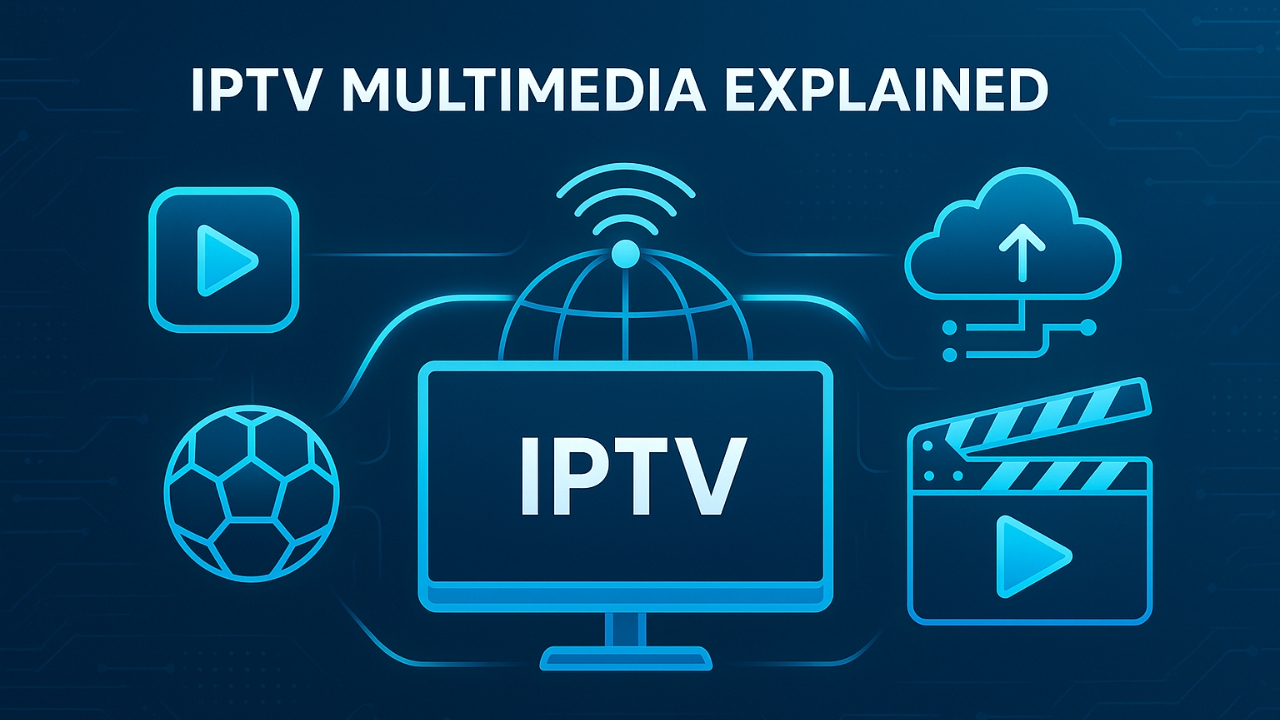
In the modern digital landscape, IPTV Multimedia is ushering in a groundbreaking shift in how audiences around the world consume entertainment. Traditional TV formats are being replaced with agile, internet-based technologies that allow for on-demand, interactive, and highly personalized viewing experiences. At the core of this transformation lies Internet Protocol Television (IPTV)—an innovation that enables content delivery via internet networks rather than satellite or cable infrastructures.
Unlike conventional TV, where content is broadcast at fixed schedules, IPTV Multimedia allows viewers to access content whenever and however they want. This is especially significant in a time when Digital Entertainment has become more fragmented, dynamic, and user-centric. Users no longer want to be tied down by programming schedules—they want flexibility, mobility, and choice.
This blog takes you on a deep dive into IPTV Multimedia, uncovering how it works, the technology behind it, its growing importance in Digital Entertainment, and why it’s rapidly becoming the gold standard for content delivery in 2025 and beyond.
Let’s begin by unpacking the term. IPTV Multimedia stands for Internet Protocol Television with multimedia integration, which means delivering a range of television content—live TV, video on demand (VOD), time-shifted media, and interactive applications—via internet networks using IP protocols.
IPTV Multimedia is all about putting the viewer in control, redefining traditional broadcasting norms by delivering customized, user-driven experiences.
The workflow behind IPTV Multimedia may seem complex, but it’s a seamless process from content creation to end-user delivery. Here’s how it works:
TV shows, movies, live events, and other media are acquired through partnerships with broadcasters, content creators, or proprietary sources.
Raw content is encoded into digital formats (like H.264 or H.265) and compressed to suit varying network speeds and device capabilities.
Encoded files are stored and managed on streaming servers or through a Content Delivery Network (CDN), which ensures fast, scalable delivery.

Using protocols like RTP (Real-Time Transport Protocol), RTMP (Real-Time Messaging Protocol), or HLS (HTTP Live Streaming), content is transmitted over the internet to user devices.
Content is accessed on smart TVs, smartphones, computers, or IPTV set-top boxes via apps or web interfaces. Users interact with the system through remote controls, touchscreens, or voice commands.
Usage data is collected to improve recommendations, monitor performance, and refine the user experience.
Here are some standout features that make IPTV Multimedia a superior option in the Digital Entertainment market:
Watch shows on your smartphone, laptop, smart TV, or tablet with a single subscription.
Enjoy ultra-clear visuals and surround sound quality.
Customizable home screens and content recommendations based on user preferences.
Pause, rewind, or replay live content on supported devices.
Record your favorite programs and store them in the cloud for later access.
Choose camera angles in sports, vote during reality shows, or explore extra content with just a click.
Stream content in your native language or add subtitles for accessibility.
| Feature | IPTV Multimedia | Traditional Television |
| Delivery Method | Internet-based (IP) | Cable/Satellite |
| Viewing Flexibility | On-demand, multi-device | Scheduled programs only |
| Interactivity | High (pause, rewind, live voting) | Limited |
| Device Compatibility | TVs, PCs, smartphones, tablets | Mostly limited to TVs |
| Cost | Subscription-based, more affordable | Often expensive cable bundles |
| Personalization | Custom recommendations and interfaces | One-size-fits-all programming |
IPTV removes geographical barriers. Whether you’re an expat wanting to watch content from your home country or a global viewer seeking international shows, IPTV Multimedia offers seamless access.
No expensive installations or hidden cable fees. You pay for what you want, and can easily scale your plan or change providers.
Platforms use algorithms to analyze viewing habits, offering curated recommendations that enhance satisfaction and engagement.
No waiting, no buffering (with decent internet). Access content when you want, how you want, and on the device you prefer.
Looking for a reliable IPTV service? Here are the top-rated options:
These platforms offer rich Digital Entertainment libraries and excellent streaming experiences worldwide.
IPTV Multimedia refers to delivering television content through Internet protocols with multimedia enhancements like VOD, interactivity, and multi-device compatibility.
IPTV can offer live TV, catch-up TV, and VOD, often bundled in one service. Netflix and YouTube focus mostly on VOD content.
Not necessarily. You can also use a smartphone, tablet, laptop, or IPTV set-top box.
Yes—when using licensed services. Avoid illegal or pirated streams to stay compliant with laws.
Yes! IPTV is perfect for global viewers, offering channels from many countries in different languages.
Yes, many IPTV services offer cloud-based DVR or recording features.
A stable internet speed of at least 10 Mbps is recommended for smooth HD or 4K streaming.
In a world where Digital Entertainment is increasingly interactive, mobile, and user-led, IPTV Multimedia checks all the right boxes. It delivers more value, more variety, and more control to viewers, whether they’re catching up on missed shows or streaming live sports events.
And it’s not just about convenience—IPTV Multimedia also empowers creators, educators, broadcasters, and businesses to reach global audiences on their terms.